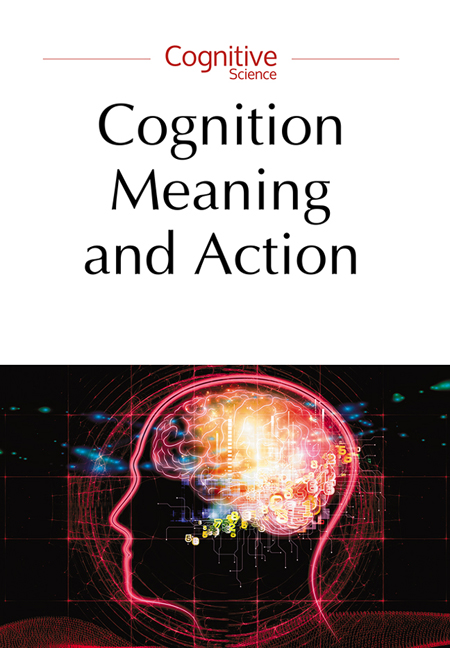Book contents
- Frontmatter
- Contents
- The crossroads of cognitive science
- Cognitive science: From computers to ant hills as models of human thought
- Two procedures expanding a linguistic competence
- Neurobiological basis for emergence of notions
- Similarity as distance: Three models for scientific conceptual knowledge
- The Approximate Numbers System and the treatment of vagueness in conceptual spaces
- Communication, cognition, and technology
- To tell and to show: The interplay of language and visualizations in communication
- Semiotics, signaling games and meaning
- Out of the box thinking
- The everyday of decision-making
- Short- and long-term social interactions from the game theoretical perspective: A cognitive approach
- Notes about Authors
Two procedures expanding a linguistic competence
Published online by Cambridge University Press: 10 January 2018
- Frontmatter
- Contents
- The crossroads of cognitive science
- Cognitive science: From computers to ant hills as models of human thought
- Two procedures expanding a linguistic competence
- Neurobiological basis for emergence of notions
- Similarity as distance: Three models for scientific conceptual knowledge
- The Approximate Numbers System and the treatment of vagueness in conceptual spaces
- Communication, cognition, and technology
- To tell and to show: The interplay of language and visualizations in communication
- Semiotics, signaling games and meaning
- Out of the box thinking
- The everyday of decision-making
- Short- and long-term social interactions from the game theoretical perspective: A cognitive approach
- Notes about Authors
Summary
Introduction
On the ground of psychology there are many various theories explaining what a notion is. All these approaches can be grouped in three classes:
(A) classical theories which present a notion as a compilation of features in common for many particular objects.
(B) probabilistic theories in which notions are derived from the higher structure
– an individual theory of the world. Notions are elements of the structure.
(C) theories in which a notion is strictly connected with its references and with other notions.
Theories of the first class are a little bit naïve today, and theories of the second class fail because of the error of circularity – in order to explain what a notion is, we need to explain what a structure is, but in order to explain what a structure is, we need to know what a notion is (Maruszewski, 2001: 297–299). Theses of theories of the third class are obviously compatible with simple everyday observations and with the logical knowledge about the properties of natural language expressions. Thus, the approach presented in the paper coincides with the main ideas of the theories of this last class.
Dialogue 1
During a stroll with his father a boy asks: – What is it, daddy?
– A building, honey – the father answers.
– Oh…
– And this is another building, isn't it? – after a while the child adds pointing at next object.
– No, it isn't. This is a shed.
– Why this is not a building? – the boy asks.
– Because it is much smaller than a building, it is constructed from ordinary boards, it is not for living, just for garden's tools…
– Uh-huh…
Dialogue 2
During a stroll with his father a child asks: – What color is this leaf?
– It is brown – the father answers.
– It's impossible! Your jacket is brown and the leaf's color is different.
– My jacket is brown and the leaf is also brown. Both colors are a little bit different but both are brown – the father states.
– And what about that car's color? – the boy asks.
– I'm afraid the car is not brown – the father answers – that car's color has a delicate red shade.
- Type
- Chapter
- Information
- Cognition, Meaning and ActionLodz-Lund Studies in Cognitive Science, pp. 31 - 50Publisher: Jagiellonian University PressPrint publication year: 2015



